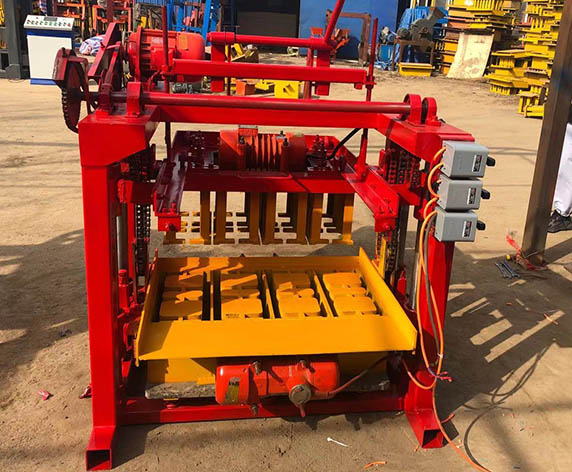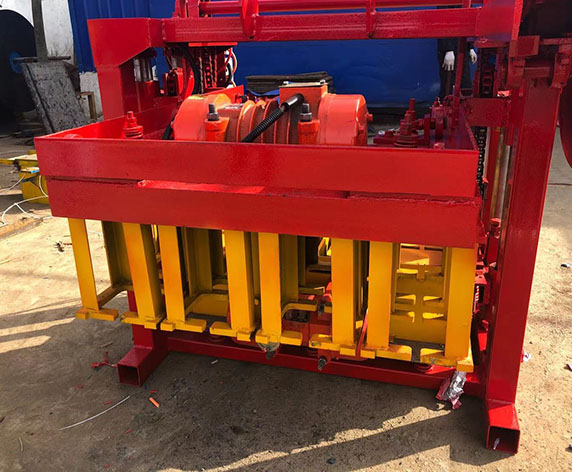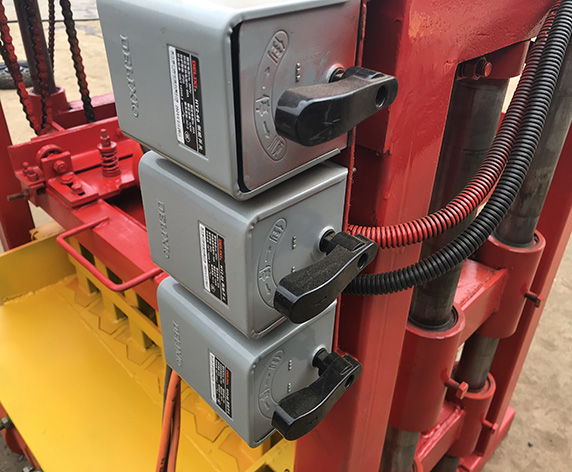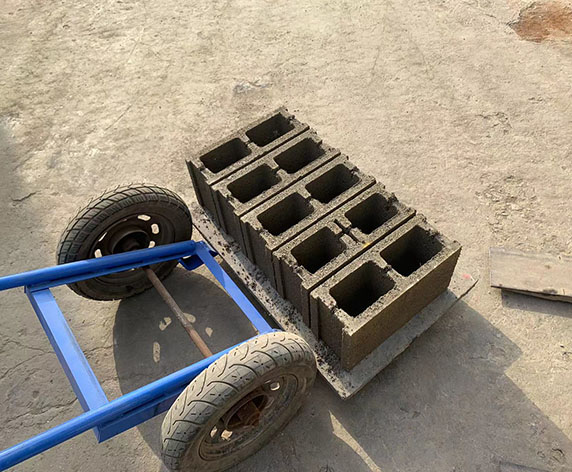



The QTJ4-45 is a stationary concrete block machine that specializes in the production of hollow concrete blocks. This machine operates on a mechanical drive system, making it highly suitable for areas with limited access to electricity. Its compact size and stationary design allow it to be installed in small spaces, making it an ideal choice for construction businesses with space constraints.
In the dynamic world of construction, finding cost-effective solutions is crucial for businesses to thrive and remain competitive. For those in the block-making industry, the stationary hollow concrete block machine QTJ4-45 has emerged as a budget-friendly option that promises both quality and affordability. This compact and efficient machine has become a go-to choice for construction businesses seeking to produce high-quality hollow concrete blocks without breaking the bank.
The QTJ4-45 stationary hollow concrete block machine is renowned for its simplicity, ease of operation, and low initial investment cost. Designed and manufactured with precision engineering, this machine provides construction entrepreneurs with the tools they need to produce hollow concrete blocks for various applications. In this article, we will delve into the key features and advantages of the QTJ4-45 stationary hollow concrete block machine, focusing on why it is considered the cheapest yet reliable option in the market.
| Technical date of QTJ4-45 | |
| Name | QTJ4-45 |
| Size | 1.2*1.5*1.4m |
| Weight | 700kg |
| Cycle | 45 seconds |
| Power | 5.9KW |
| Forming method | Vibration |
| Material | Cement, sand, little stones |
| Capacity of QTJ4-45 | ||||
| Type | Size | Pcs/Mold | Pcs/H | Pcs/10 H |
| Hollow/Solid | 400*200*200mm | 4 | 320 | 3200 |
| 400*150*200mm | 5 | 400 | 4000 | |
| 400*100*200mm | 7 | 560 | 5600 | |
Key Features and Advantages of the QTJ4-45 Stationary Hollow Concrete Block Machine
Simplicity in Design and Operation
One of the primary advantages of the QTJ4-45 is its straightforward design and ease of operation. The machine's mechanical drive system eliminates the need for electricity, simplifying its setup and operation. Its controls are user-friendly and easy to understand, making it accessible to operators of all skill levels.
Cost-Effectiveness
The QTJ4-45 is renowned for its affordability. Compared to other high-capacity block machines, its initial investment cost is significantly lower, making it an attractive option for small and medium-sized construction businesses or those starting their block-making venture on a budget.
High-Quality Hollow Concrete Blocks
Despite its low price, the QTJ4-45 does not compromise on the quality of hollow concrete blocks it produces. The machine's precision engineering ensures that each block is manufactured with consistent dimensions and structural integrity, meeting industry standards for construction applications.
Versatility in Block Types
The QTJ4-45 is not limited to producing only hollow concrete blocks. It is also capable of manufacturing solid blocks, interlocking pavers, and other masonry products. This versatility allows businesses to diversify their product offerings and adapt to varying market demands.
Suitable for Small-Scale Production
For construction businesses focusing on smaller projects, the QTJ4-45's production capacity is ideal. Its efficient output allows businesses to meet the demands of local projects without excess block inventory, minimizing waste and optimizing productivity.
Low Maintenance Requirements
The QTJ4-45's mechanical drive system and robust construction contribute to its low maintenance requirements. Regular maintenance ensures the machine operates efficiently and extends its lifespan, providing a long-term cost-effective solution for block production.
Understanding the Block-Making Process with the QTJ4-45
The operation of the QTJ4-45 stationary hollow concrete block machine involves several key steps:
Step 1: Raw Material Preparation - Prepare the concrete mixture with the right proportions of cement, sand, and aggregate. Thoroughly mix the materials to achieve a homogenous mixture.
Step 2: Filling the Mold - Place the mold in the machine's mold box. Fill the mold with the prepared concrete mixture, ensuring it is evenly filled to create a uniform hollow block.
Step 3: Block Shaping - Once the mold is filled, the machine's mechanical drive system will apply pressure to shape the concrete mixture into the desired hollow block design.
Step 4: Demolding - After the block is formed, carefully remove the mold to demold the freshly made hollow block.
Step 5: Curing - Allow the hollow blocks to cure and gain strength before they are ready for use in construction projects.
Profitability and Success with the QTJ4-45 Stationary Hollow Concrete Block Machine
The QTJ4-45's low initial investment cost and high-quality output offer a profitable opportunity for construction businesses. Its affordability allows entrepreneurs to enter the block-making industry with minimal financial risk, while its reliable performance ensures consistent production and customer satisfaction.
By leveraging the QTJ4-45's cost-effectiveness and versatility, construction businesses can explore various market opportunities and cater to different project requirements. As the demand for sustainable construction materials grows, hollow concrete blocks produced by the QTJ4-45 will continue to find favor among environmentally conscious builders.



The QTJ4-45 stationary hollow concrete block machine proves that high-quality block production does not always come with a hefty price tag. Its budget-friendly nature, simplicity in design and operation, and consistent output quality make it a valuable asset for construction businesses, especially for beginners and those operating on a tight budget.
With its versatility, the QTJ4-45 adapts to various block types, providing construction businesses with the flexibility needed to thrive in a competitive market. As sustainability becomes a focal point in the construction industry, the QTJ4-45’s contribution to eco-friendly hollow concrete block production further solidifies its relevance and impact on the future of construction.